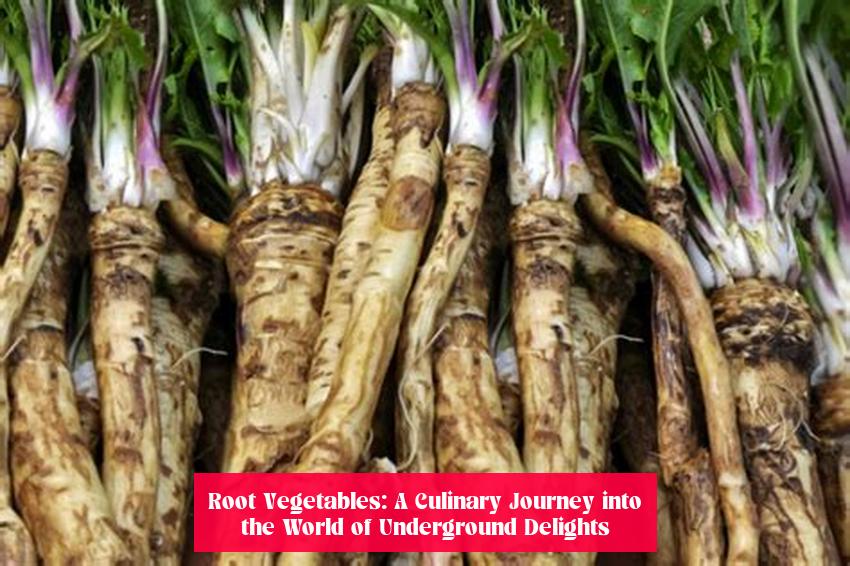Unravel the mystery of the round root vegetable crossword clue and join us on a culinary journey into the world of underground delights. From the purple and white delicacy of the turnip to the culinary gem of the north, the swede, we’ll explore the diverse tapestry of root vegetables. Get ready to embrace the challenge of crossword conundrums and unearth the fascinating stories behind these humble yet delicious treasures. Let’s dig in and discover the intriguing world of round root vegetables!
Key Takeaways
- Root vegetables encompass a variety of underground plant parts used as vegetables, including true roots, tubers, rhizomes, corms, bulbs, and hypocotyls.
- The purple and white round root vegetable often used in dishes is the turnip, specifically the Purple Top White Globe variety.
- Turnips are versatile and can be boiled, roasted, mashed, added to soups and stews, and their greens are also edible and can be cooked or added to salads.
- Swedes are round, yellow-fleshed root vegetables with a sweet, earthy flavor, best cooked until tender but can fall apart if overcooked.
- The crossword clue for a round root vegetable with 4 letters is “turnip.”
- When looking for a 6-letter crossword answer for a rounded root vegetable, “turnip” is the solution.
Table of Contents
Root Vegetables: A Culinary Journey into the World of Underground Delights

As culinary enthusiasts, we embark on a delectable expedition into the realm of root vegetables, a diverse group of underground plant parts that have captivated taste buds for centuries. From humble beginnings to culinary stardom, these subterranean treasures offer a symphony of flavors, textures, and nutritional benefits. Join us as we delve into the fascinating world of root vegetables, uncovering their culinary versatility and exploring the myriad ways they can enhance our culinary creations.
A Tapestry of Root Vegetables: Unraveling the Diversity
The term “root vegetable” encompasses a vast array of edible plant parts that reside beneath the earth’s surface. This diverse family includes true roots, such as carrots and radishes, as well as non-roots like potatoes, onions, and garlic. Each member of this subterranean ensemble possesses unique characteristics, contributing a distinct flavor profile and culinary application to the culinary landscape.
Mrs. Grass Chicken Noodle Soup Recipe: A Heartwarming Culinary Tradition
True Roots: These vegetables, such as carrots, parsnips, and beets, are the primary anchors of plants, providing structural support and absorbing water and nutrients from the soil. Their firm texture and earthy flavors make them ideal for roasting, boiling, or mashing, adding a rustic charm to countless dishes.
Tubers: Unlike true roots, tubers are modified stems that store food reserves for the plant. Potatoes, the quintessential tuber, exemplify this category, boasting a starchy interior and a versatility that spans countless culinary preparations, from hearty soups to delectable French fries.
Rhizomes: These horizontal underground stems, exemplified by ginger and turmeric, are packed with aromatic compounds and pungent flavors. Their distinct taste and medicinal properties have earned them a revered place in both culinary and traditional healing practices.
Don’t Miss – Unlocking the Power of Turmeric: A Natural Remedy for Blood Pressure Control
Corms: Corms, such as taro and crocus, are compact, bulb-like structures that serve as storage organs for plants. Their starchy interiors and earthy flavors make them a staple in many global cuisines, often gracing soups, stews, and curries.
Bulbs: Onions and garlic, members of the lily family, are prime examples of bulbs, characterized by their layered structure and pungent aromas. These culinary staples form the backbone of countless dishes, adding depth of flavor to everything from stir-fries to pasta sauces.
Hypocotyls: These thickened stems, such as beets and turnips, connect the roots to the above-ground portion of the plant. Their fleshy, often bulbous structures and mild flavors make them a versatile addition to salads, soups, and roasted vegetable platters.
The Purple and White Delicacy: Embracing the Turnip
Among the diverse tapestry of root vegetables, the turnip stands out as a culinary gem, revered for its versatility and nutritional prowess. This purple and white root vegetable, specifically the Purple Top White Globe variety, has earned a prominent place in culinary traditions worldwide. Its mild, slightly sweet flavor and tender texture make it a welcome addition to a myriad of dishes, from soups and stews to roasted vegetable platters.
Culinary Canvas for Creativity: The turnip’s culinary versatility knows no bounds. Whether boiled, roasted, mashed, or added to soups and stews, it seamlessly adapts to various cooking methods, showcasing its adaptability in the culinary realm. Its mild flavor allows it to harmonize effortlessly with other ingredients, making it a versatile companion in countless recipes.
Nutritional Powerhouse: Beyond its culinary merits, the turnip is a nutritional powerhouse, brimming with essential vitamins and minerals. It is a rich source of vitamin C, an antioxidant crucial for immune function and collagen production. Additionally, turnips are a good source of potassium, an essential mineral for regulating blood pressure and maintaining electrolyte balance.
Edible Greens: Not only is the turnip’s root a culinary delight, but its greens are also edible, offering a nutritional boost to salads and cooked dishes. Rich in vitamins A, C, and K, turnip greens are a valuable addition to a healthy diet, providing essential nutrients for overall well-being.
Swede: A Culinary Gem from the North
Read Also : The Chicken Place Johnston SC: A Culinary Gem and Local Favorite
Hailing from the northern regions, the swede, also known as rutabaga, is a round, yellow-fleshed root vegetable that has carved a niche in culinary traditions. Its sweet, earthy flavor and versatility in cooking have made it a beloved ingredient in countless dishes.
Culinary Versatility: The swede’s culinary prowess shines in its adaptability to various cooking methods. Whether boiled until tender or roasted to perfection, it retains its delightful flavor and texture. Its versatility extends to soups and stews, where it adds a touch of sweetness and earthy notes to these hearty concoctions.
>> Rooting for Health: Unveiling the Wonders of Round Orange Root Vegetables
Nutritional Profile: The swede is not only a culinary delight but also a nutritional powerhouse. It is a rich source of vitamin C, an antioxidant that plays a vital role in immune function and collagen production. Additionally, it is a good source of potassium, an essential mineral for regulating blood pressure and maintaining electrolyte balance.
Cooking Considerations: While the swede is a culinary gem, it requires careful cooking to avoid overcooking, which can result in a mushy texture. Gently cooking it until tender ensures its delightful flavor and texture remain intact, elevating any dish it graces.
Crossword Conundrums: Unraveling Root Vegetable Clues
In the realm of crosswords, root vegetables often take center stage, challenging solvers with their enigmatic clues. Here are some examples to test your crossword prowess:
4-Letter Crossword Clue: For a four-letter root vegetable, the answer is “turnip.” This versatile vegetable, often used in soups and stews, is a staple in many cuisines.
6-Letter Crossword Clue: When seeking a six-letter root vegetable, “turnip” once again emerges as the solution. Its mild flavor and adaptability to various cooking methods make it a crossword solver’s delight.
Round Root Vegetable Crossword Clue: For a round root vegetable, the answer is “swede.” This large, yellow-fleshed vegetable, also known as rutabaga, adds a touch of sweetness to culinary creations.
Conclusion:
Root vegetables, with their diverse array of flavors, textures, and nutritional benefits, are culinary treasures that have captivated taste buds for centuries. From the versatility of the turnip to the earthy sweetness of the swede, these subterranean delights offer endless possibilities for culinary exploration. Whether gracing soups, stews, salads, or roasted vegetable platters, root vegetables add a touch of culinary magic to every dish they grace. So, embrace the culinary wonders of root vegetables and embark on a delectable journey of flavors and textures that will tantalize your taste buds and nourish your body.
What are root vegetables called?
Root vegetables are underground plant parts used as vegetables. They are called root vegetables for lack of a better generic term, but include both true roots such as tuberous roots and taproots, as well as non-roots such as tubers, rhizomes, corms, bulbs, and hypocotyls.
What is a purple and white round root vegetable?
The purple and white round root vegetable often used in dishes is the turnip, specifically the Purple Top White Globe variety. Turnips are versatile and can be boiled, roasted, mashed, added to soups and stews, and their greens are also edible and can be cooked or added to salads.
What are big round root vegetables?
Big round root vegetables include turnips. They are often combined with other root vegetables like carrots and potatoes and can be boiled, roasted, mashed, or added to soups and stews.















